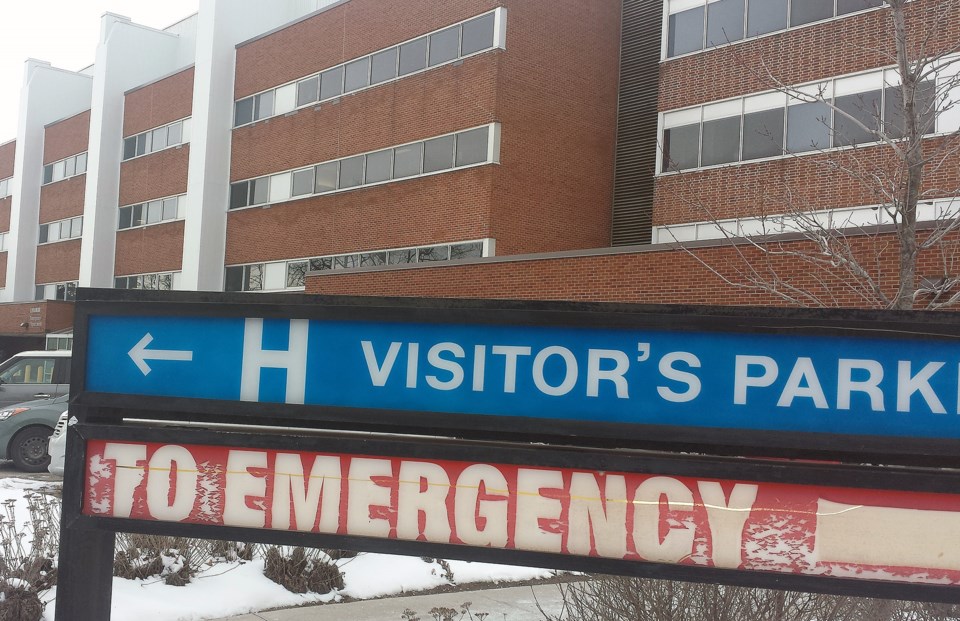Emergency room wait times in Guelph General Hospital and Groves Memorial Community Hospital were longer than the provincial average in February, new data from Ontario Health shows.
Of the 121 hospitals ranked for the average wait time assessments in February, GMCH had one of the longest wait times, at an average of 2.9 hours from check-in to seeing a doctor or nurse practitioner. This is higher than they were for much of the previous year.
Meanwhile, the average wait time at GGH is 2.2 hours – higher than the provincial average, but still slightly lower than they were for much of the previous year.
The provincial average for the same month was 1.8 hours, making the wait times at GMCH and GGH 61 and 22 per cent longer, respectively.
However, those wait times are based on when a patient is triaged to when a doctor is able to do their first assessment, said Melissa Skinner, vice-president patient services and chief nursing executive at GGH.
“Before seeing a doctor many patients will have already been assessed by a nurse, given pain medication, or had blood work taken, or even had an X-ray,” she said in an email.
That said, the wait times were even longer than usual at Groves in January and February due to a sudden spike in alternate level care patients, said Kate Kobbes, vice-president of clinical services and chief nursing executive.
“In January and February, we had a high number of inpatient ALC, so patients waiting for either home health, long-term care, or some other sub-acute bed. And that caused us to have a large number of patients waiting in the emergency department on a daily basis,” she said.
Typically, ALC patients occupy about 20 per cent of hospital beds. In January, that number rose to 48 per cent, and there were an average of eight people waiting for a bed in the ER on any given day.
“If you have admitted patients clogging up the emergency department, the wait times go up longer, because there’s not as many spaces to see patients. The turnover is slower,” she said.
Kobbes said the spike in ALC patients was unusual and region-wide. While she said there are never enough beds in long-term care, getting people access to home care in Wellington County has been especially difficult in the last six months because of vacancies within home health, she said.
GGH has also experienced a higher number of ALC patients lately; Skinner said they currently have 38 patients who are “medically stable and waiting for support or transition to another level of care in the community,” Skinner said.
The average length of stay in emergency for those admitted to the hospital climbed from 13.2 hours in February 2022 to 22.6 in February 2023.
“These patients may end up waiting in hospital for days or even weeks, which contributes to having no beds available for those waiting in our emergency department,” she said.
As Groves’ ALC number dropped back down to around 22 per cent in February, so too did the wait time for admitted patients in the ER, with patients spending around 17 hours in the emergency room between check-in and waiting for a bed. However, that’s still 5.1 hours longer than it was in February 2022.
The wait time from check-in to seeing a doctor or nurse practitioner, though, went up to 2.9 in February, as the hospital continued to see a high number of patients with respiratory illnesses coming into the ER.
As such, Kobbes said they expect wait times to go down as we get into the warmer months and cold and flu season comes to an end.
For GGH, part of the problem is that the emergency department is undersized, and the number of patients being admitted has increased.
“We are now admitting over 15 per cent of patients which indicates that those seeking care are more ill than they once were,” Skinner said.
Low-urgency patients not admitted at GGH, such as those with sore throats or vomiting, spent an average of 3.1 hours in the emergency department, with 73 per cent finishing their visit within a target time of four hours.
High-urgency patients not admitted, such as those who’ve experienced a heart attack or overdose, spent an average of 4.3 hours in the emergency department, with 93 per cent finishing their visit within a target time of eight hours.
At Groves, low-urgency patients not admitted spent an average of 3.7 hours in the emergency department, with 61 per cent finishing their visit within a target time of four hours. This is above the provincial average as well, which is at 3 hours.
Meanwhile, high-urgency patients not admitted spent an average of 5.6 hours in the emergency department, with 84 per cent finishing their visit within a target time of eight hours. The average time provincially is 4.5 hours.
“We continue to do the best we can with the resources we have and are grateful for our community and partners in care.”
